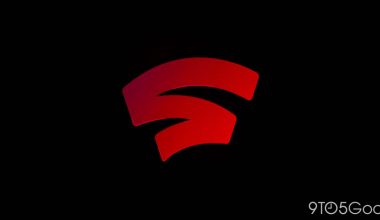In practically every way, the Fujifilm X-H2S ($2,499, body only) pushes the limits. It is the first Fuji camera to have a new generation, high-speed Stacked CMOS sensor that offers 40 frames per second (fps) Raw photo bursts and 4K60 ProRes video. It surpasses competitors with its exceptional video capabilities and gains from an improved autofocus mechanism with sophisticated subject identification. All of this serves to demonstrate that the X-H2S is more than capable of capturing difficult pictures. However, although being one of the more reasonably priced Stacked sensor cameras available, it is still significantly more expensive than our Editors’ Choice winner for APS-C mirrorless cameras, the Canon EOS R7 ($1,499), and is priced on par with our preferred full-frame model, the Sony a7 IV.
STACKED CMOS REACHES EARTH A Stacked CMOS chip, a novel form of image sensor for Fujifilm, is used in the X-H2S. In comparison to the BSI CMOS chips found in the majority of interchangeable lens cameras, these sensors have fast onboard memory and scan all of their pixels quickly. When you use the silent, totally electronic shutter mode, they can more dependably freeze action. Read our image sensor explainer for more information.
Image 1 in Image 2 (Credit: Jim Fisher) Since the onboard DRAM raises the cost of production, cameras with stacked chips usually cost more than simpler ones. The Sony a9 II ($4,499) and Canon EOS R3 ($5,999) are the entry-level options if you want one with a full-frame imager. The Micro Four Thirds sensor and $2,299 pricing of the OM System OM-1 put it more in line with the X-H2S.
Fujifilm is well aware that the X-competitive H2S’s positioning may turn away its core clientele, who are accustomed to spending more money on flagship models like the $1,699 X-T4. As a result, it is releasing a sibling model called the X-H2 for $1,999 that has a 40MP BSI CMOS sensor. The X-H2 has the same camera body and autofocus algorithms, and thanks to its mechanical shutter, it can shoot raw images at 15 frames per second. Although we haven’t had much time with the X-H2, we do have some first thoughts for anyone trying to choose between the two.
COMPARED PRODUCTS
0 is excellent,

1 is excellent,

2 is 3.5,

3 is 3.5, and

4 is 3.5. (Photo by Jim Fisher) There are valid arguments in favor of the 26MP X-H2S. Because there is no blackout or lag between individual frames, if you’re all about action photography, this model makes it simpler to follow a bald eagle flying through the sky or watch on-field sports activity. Since the e-shutter of the camera is silent and doesn’t startle animals or birds, I really enjoy using it to take pictures of them.
The X-H2S offers both 4K60 and 6.2K30 video modes, using the entire 3:2 sensor area instead of a 16:9 or 17:9 widescreen chop. You may also capture 4K120 slow-motion clips. The X-H2 employs its denser sensor for 8K30 and 4K60 video but lacks open gate 3:2 and the same high frame rate options as the X-H2S. ProRes 422 to a card and Raw output over HDMI are supported by both variants.
A PERFECT X-H BODY Early April 2018, Fujifilm released the X-H1. The X system in-body stabilization, the Eterna film simulation profile, and a concentration on video in general were all firsts at the time. It was the final model to employ the 24MP X-Trans III CMOS sensor, which was another finality. This time around, Fuji avoided the mistake of using an outdated sensor in its flagship camera; both the X-H2S and its sibling model, the X-H2, have brand-new imagers.
5 (Photo by Jim Fisher) The magnesium alloy chassis of the X-H2S, the de facto standard for enthusiast and professional ILCs, contributes to its longevity. Although Fuji does not provide an IP rating, the body is sealed to keep splashes and dust outside. On a rainy morning walk, the camera performed flawlessly in spite of getting very soaked.
If you want to use larger lenses, the handgrip is a little deeper here than on the X-T4, which is advantageous. I experimented with the X-H2S with the XF 16-55mm F2.8 and XF 150-600mm F5.6-8 lenses. Both lenses were easy to grasp in my hands, and I didn’t feel the need for a larger camera to manage even the enormous 150-600mm telezoom. For an additional $399, you may upgrade to the VG-XH vertical control grip.
CONTROLS AND HANDLING The X-handgrip H2S’s is appealing to us, and the camera’s ergonomics are excellent as well. A pair of pliable control buttons are featured on the front plate. Another bendable button, White Balance, ISO, and Record settings, as well as an OLED info panel, are located on the top. The PASM Mode dial has a central post lock and is located off to the left. I miss a function that Fuji removed from the X-H1 since the first-generation cam featured a control dial to switch between continuous drive modes. With the X-H2S, switching between single release and continuous drive requires navigating through a menu.
6 (Photo by Jim Fisher) The dual control dials protrude from the back plate and are a component of the handgrip. This time around, Fuji did away with push-in features for the dials, another modification that calls for user adaptation for X-H1 owners. Because Fuji is the only manufacturer of the push-in control dials on the earlier X-H1, potential switchers from other brands won’t notice.
The controls in the back are very standard. The Delete/Drive and Play buttons are in the upper left corner, and on the other side of the viewfinder are an AF-ON button, an eight-way focus controller, and the previously stated back control wheel. Along with the rear LCD, additional buttons are located in a column: AE-L, Q, Menu/OK, Display/Back, and four directional buttons. The functions of the final buttons can be changed. By default, they set the shutter type, film simulation modes, and power-saving choices. Additionally, you may program the rear display to respond to directional swipes so that you can control additional features with those motions.
7 (Photo by Jim Fisher) All camera manufacturers provide some sort of on-screen display in addition to button and dial controls. With Fuji, the entire back screen is occupied by the Q overlay menu. The user interface is adaptable and allows touch and dial control. You may choose between a translucent, semi-transparent, or opaque background, choose the number of items that appear, and create distinct custom menus for photo and video modes.
Sharp, large viewfinder The eye-level electronic viewfinder of the X-H2S is a step forward from those on most APS-C sensor cameras. Due to its 0.8x magnification and sharp 5.8 million dot OLED panel, details in a scene may be seen more easily. There is also a zoomed-out, lower magnification option that window-boxes the live feed and is a suitable choice if you have difficulties seeing the full-size preview’s corners and borders.
Nostalgic Negative,

8 XF 150-600mm, 600mm, f/8, 1/500-second, ISO 2500 (Photo by Jim Fisher) Although there are a few alternative display settings, the Normal mode, which has a refresh rate of 60 frames per second, is sufficient for the majority of snapshots. A couple Boost options are also provided by Fuji to improve the EVF’s performance at the expense of battery life. For action shooting, 120fps and 240fps refresh rates are available, and to my eye, they look exactly as sharp as the usual 60fps view. For more reliable manual focus and macro operations, you can switch to the Resolution Priority mode. You can also use the Economy option to save battery life.
9 (Photo by Jim Fisher) For selfies and vlog-style recordings, the 3-inch, 1.6-million-dot rear display can swing out to the side and face forward. Compared to the one on the X-H1, which could tilt but not face forward, it is a little more practical for video. The front-facing screen format has taken Fuji longer to embrace, but it has chosen this screen design for more recent enthusiast versions, beginning with the X-T4. The brightness may be changed, and at its highest setting, the display is viewable even on sunny days.
POWER AND COMMUNICATION The same NP-W235 battery that powers the X-T4 also powers the X-H2S. The battery is good for more than an hour of ProRes 422 video and should last for 550–580 (EVF/LCD) shots per charge (even longer if you opt for 24fps over 60fps). The still’s battery rating should be taken with a grain of salt because if the drive is configured for burst capture, you will definitely receive more pictures per charge. In actual use, I find the X-H2S battery to be all-day capable, and I particularly value the convenience of being able to recharge it on the move with a USB-C power bank. Throughout my review period, I never felt the need for more power, but if you want to use the camera while traveling, it’s a good idea to have a backup battery on hand.
4 (Photo by Jim Fisher) There are two card slots on the camera. The fastest writing format available right now, CFexpress (Type B), is supported in the primary slot. If you wish to use the highest quality (ProRes) video, you should pick these cards. UHS-II SDXC cards are compatible with the second slot.
You can sync up with external strobes thanks to the PC Sync flash connection on the front and the hot shoe on top of the viewfinder. There is no in-body flash on the X-H2S. It offers a full-size HDMI connector for video and supports some Atomos and Blackmagic recorders with 12-bit Raw output. Additionally, there are 3.5mm connectors for a microphone and headphones, and USB-C can be used for charging, file transfers, tethered shooting, or webcam use with a computer. However, you can’t simply connect an SSD as an external storage device, which is a bummer given how large 4K60 ProRes files are. When you utilize the most demanding video settings, it doesn’t take much to fill up a 512GB CFe card.
f/5.6, 1/40 sec., ISO 160, Velvia/Vivid,







